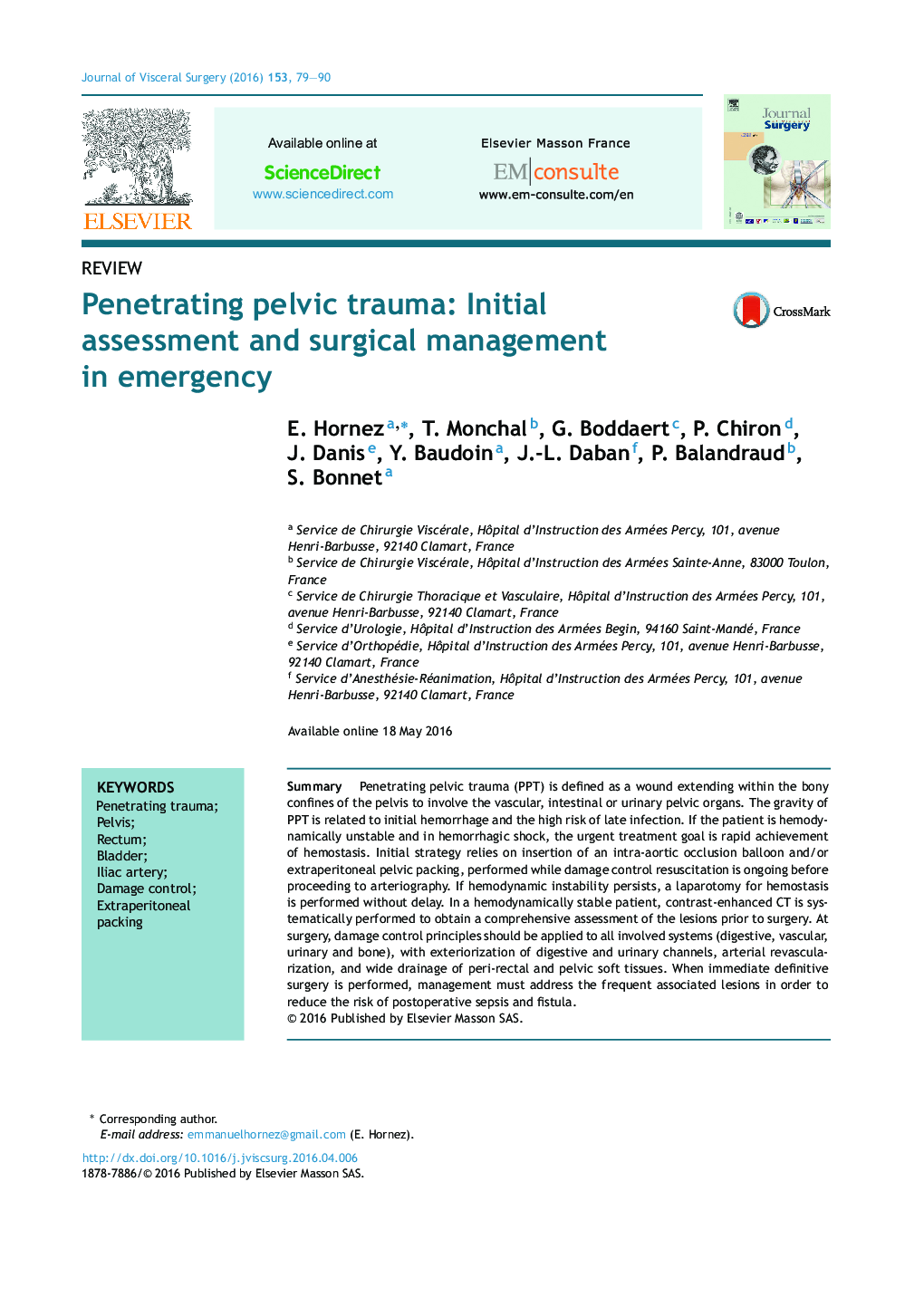| Article ID | Journal | Published Year | Pages | File Type |
|---|---|---|---|---|
| 3315718 | Journal of Visceral Surgery | 2016 | 12 Pages |
SummaryPenetrating pelvic trauma (PPT) is defined as a wound extending within the bony confines of the pelvis to involve the vascular, intestinal or urinary pelvic organs. The gravity of PPT is related to initial hemorrhage and the high risk of late infection. If the patient is hemodynamically unstable and in hemorrhagic shock, the urgent treatment goal is rapid achievement of hemostasis. Initial strategy relies on insertion of an intra-aortic occlusion balloon and/or extraperitoneal pelvic packing, performed while damage control resuscitation is ongoing before proceeding to arteriography. If hemodynamic instability persists, a laparotomy for hemostasis is performed without delay. In a hemodynamically stable patient, contrast-enhanced CT is systematically performed to obtain a comprehensive assessment of the lesions prior to surgery. At surgery, damage control principles should be applied to all involved systems (digestive, vascular, urinary and bone), with exteriorization of digestive and urinary channels, arterial revascularization, and wide drainage of peri-rectal and pelvic soft tissues. When immediate definitive surgery is performed, management must address the frequent associated lesions in order to reduce the risk of postoperative sepsis and fistula.
